When a mob incited by President Donald Trump stormed the U.S. Capitol on Wednesday, photographer Christopher Lee, on assignment for TIME, followed the rioters inside to document their destruction. The day, which started with the President encouraging his supporters to “take back our country” and culminated in federal lawmakers fleeing amid the sounds of gunshots and glass breaking in the halls of Congress, was among the most dangerous Lee says he’s seen in his career.
“This was probably the most in-your-face dismantling of American exceptionalism,” says Lee, who has photographed conflicts and protests in the Middle East, Central Asia, and elsewhere in the United States. He’s used to chaotic situations, but this one was different. “While doing my job in America, that was probably the time that I feared the most for my safety,” he adds.
On Wednesday morning, as Congress prepared to certify President-elect Joe Biden’s victory, Trump addressed a crowd of thousands gathered on the Ellipse outside the White House, telling them the 2020 election represented an “egregious assault on our democracy.” As soon as the President told his supporters they should “walk down to the Capitol,” small groups started to follow those instructions before he finished his speech.
The crowd at the rally had been excited, Lee recalls, with parents, children and elderly supporters all in attendance. But as they neared the Capitol, people began rushing the barricades around the building and quickly overwhelmed the Capitol Police standing behind them. “It was definitely something that they were very unprepared for,” he says.
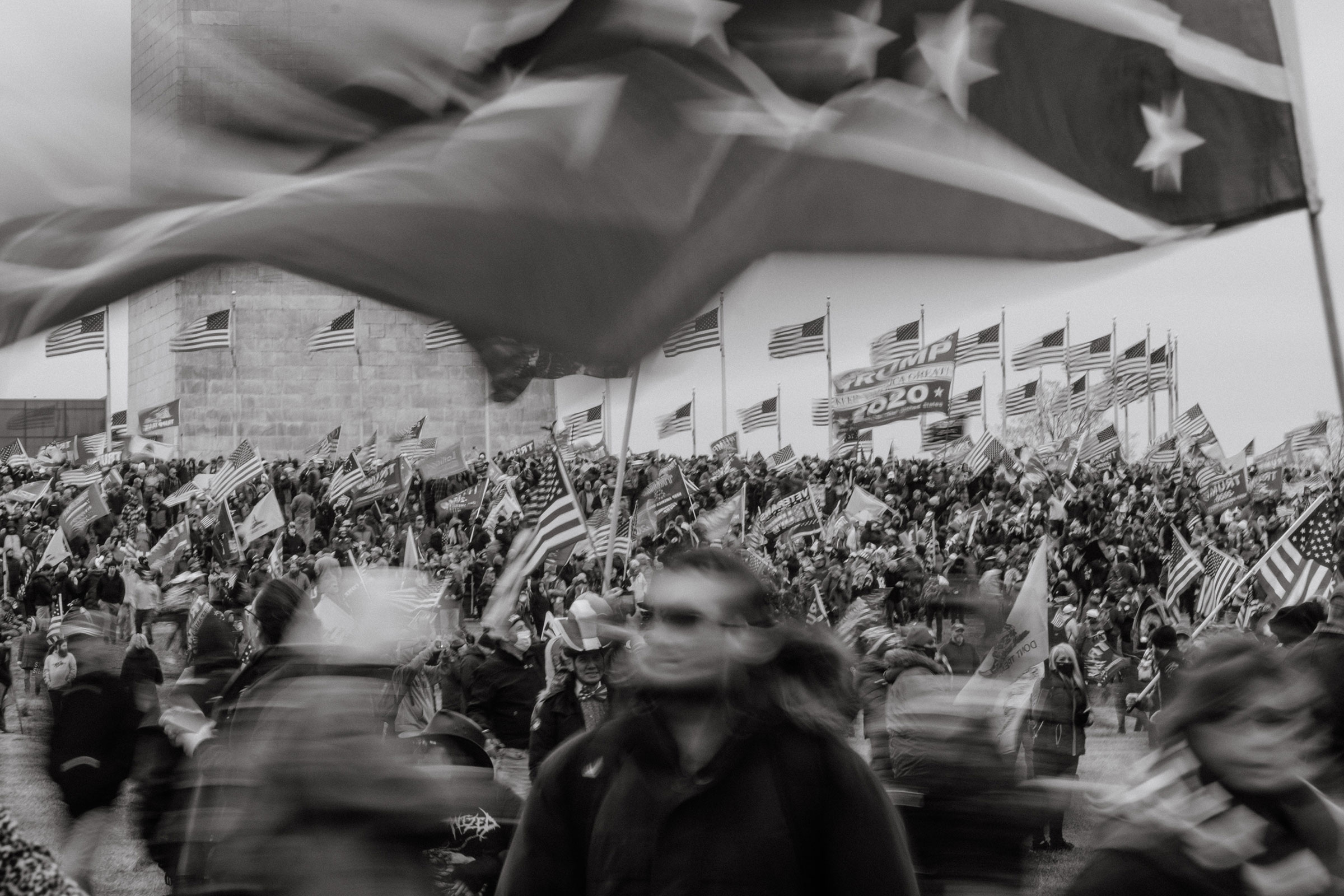





Once inside the Capitol building, the mob encountered little resistance. They smashed windows, knocked over furniture, stole mail and other items from members of Congress, and made their way into the House and Senate chambers.
As they wound their way through the halls, one group found themselves face-to-face with a lone police officer. The officer tried to hold off the mob, but the maskless group pushed him back up multiple flights of stairs until they reached the landing outside Senate chamber, where a few other officers stepped in to help.
The intense exchange was captured on video by HuffPost reporter Igor Bobic, and Lee photographed the scene from the opposite angle, showing the crowd charging at the single officer, who was Black.
“The thing that really stood out to me was that it was a bunch of white rioters going after and trying to bum rush a single Black cop. I don’t know what the situation was, but he certainly didn’t have that backup,” Lee says. “It was a really eye-opening moment, as to how not only completely overwhelmed and unprepared they were for that, but also how quickly that mob mentality and escalation happens.”


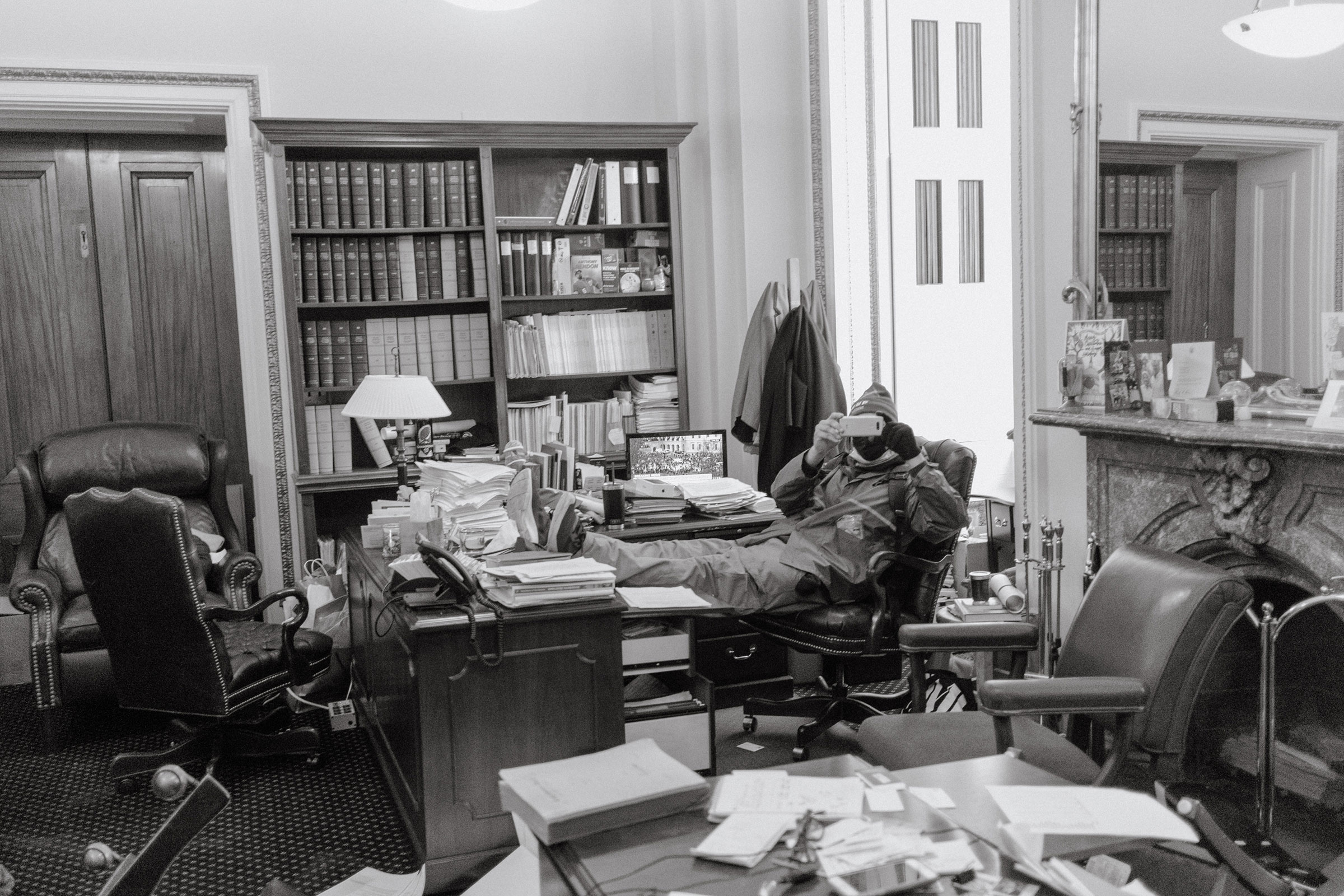

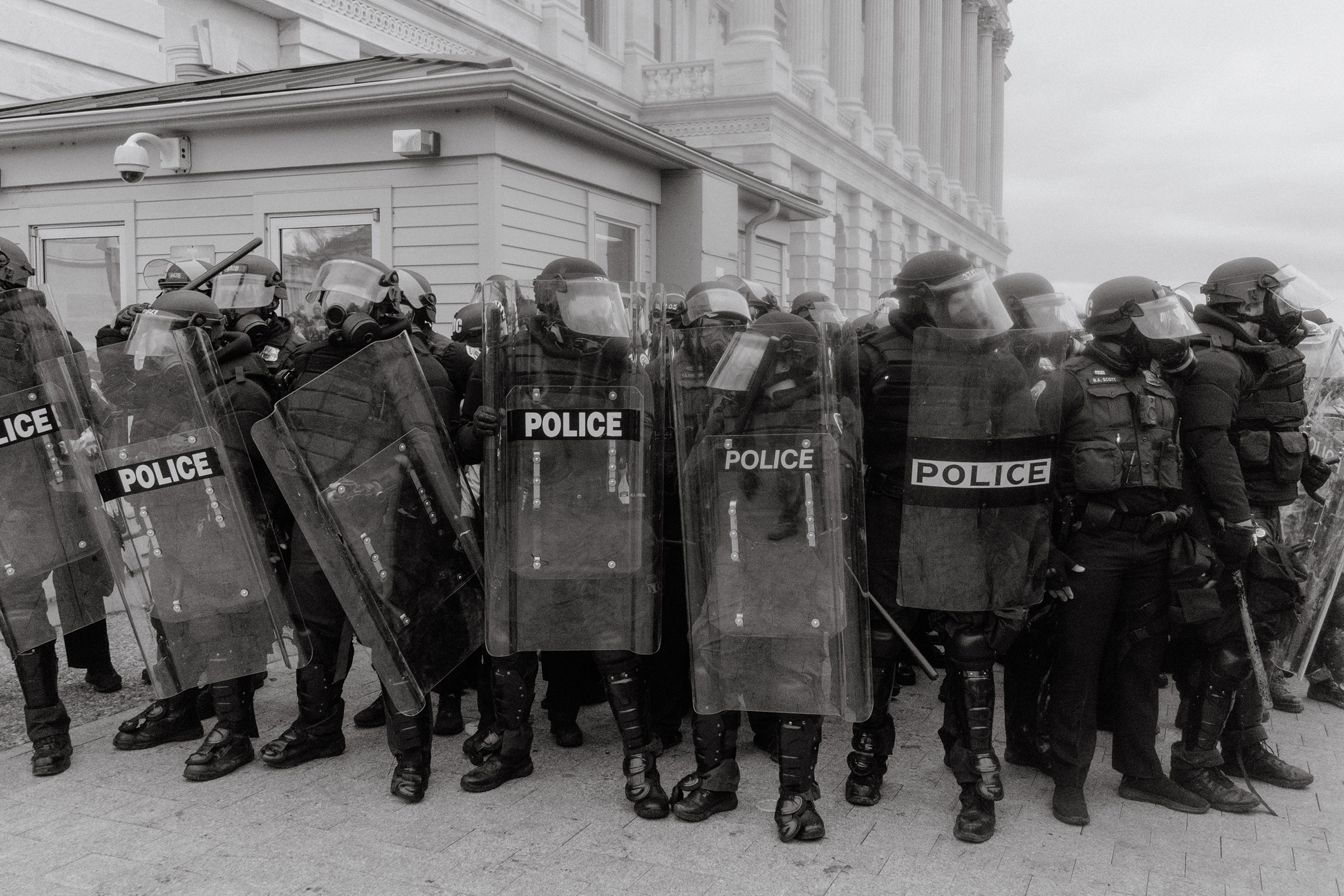

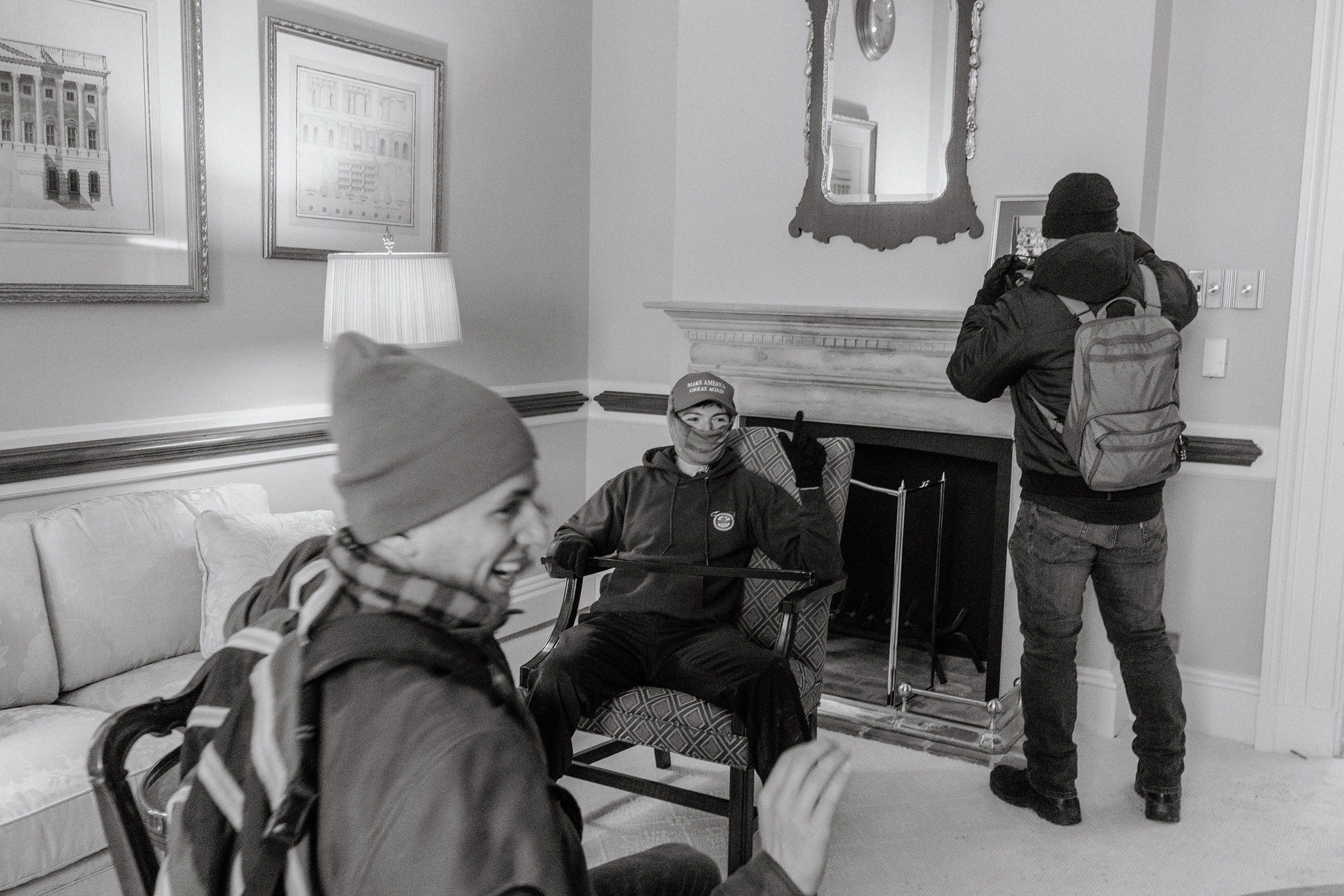
The rioters also aimed their anger at journalists, a group Trump has targeted throughout his presidency. They scratched the words “murder the media” into a door in the Capitol, destroyed journalists’ equipment and hung a noose made of stolen camera cords. At first, Lee tried to stay “incognito” as he ran into the building with the mob, but eventually, a group of at least six men realized he was a journalist and started to grab him to throw him out of the Capitol.
Yelling “fake news” and declaring him a member of the “liberal media,” the group then threatened to beat him up. “It was a moment that I realized, If I don’t leave the situation right now by any way possible, it could escalate into something really, really bad,” Lee says. “I’ve had it happen on a couple occasions in America, but not to that level of severity that quickly.”
Part of the danger, Lee believes, stemmed from the fact that so few members of the press were together inside the Capitol. The massive complex and large number of rioters meant there were many moments where he was alone with a sea of angry people calling for the overthrow of a free and fair election, demanding access to the halls of government and convinced they had the right to do whatever they wanted. “But that didn’t stop me from continuing to try to do my job,” he says. Lee knew he had to keep documenting what was going on inside the Capitol, so soon after he left the initial group, he found another group breaking a different entryway and entered again.
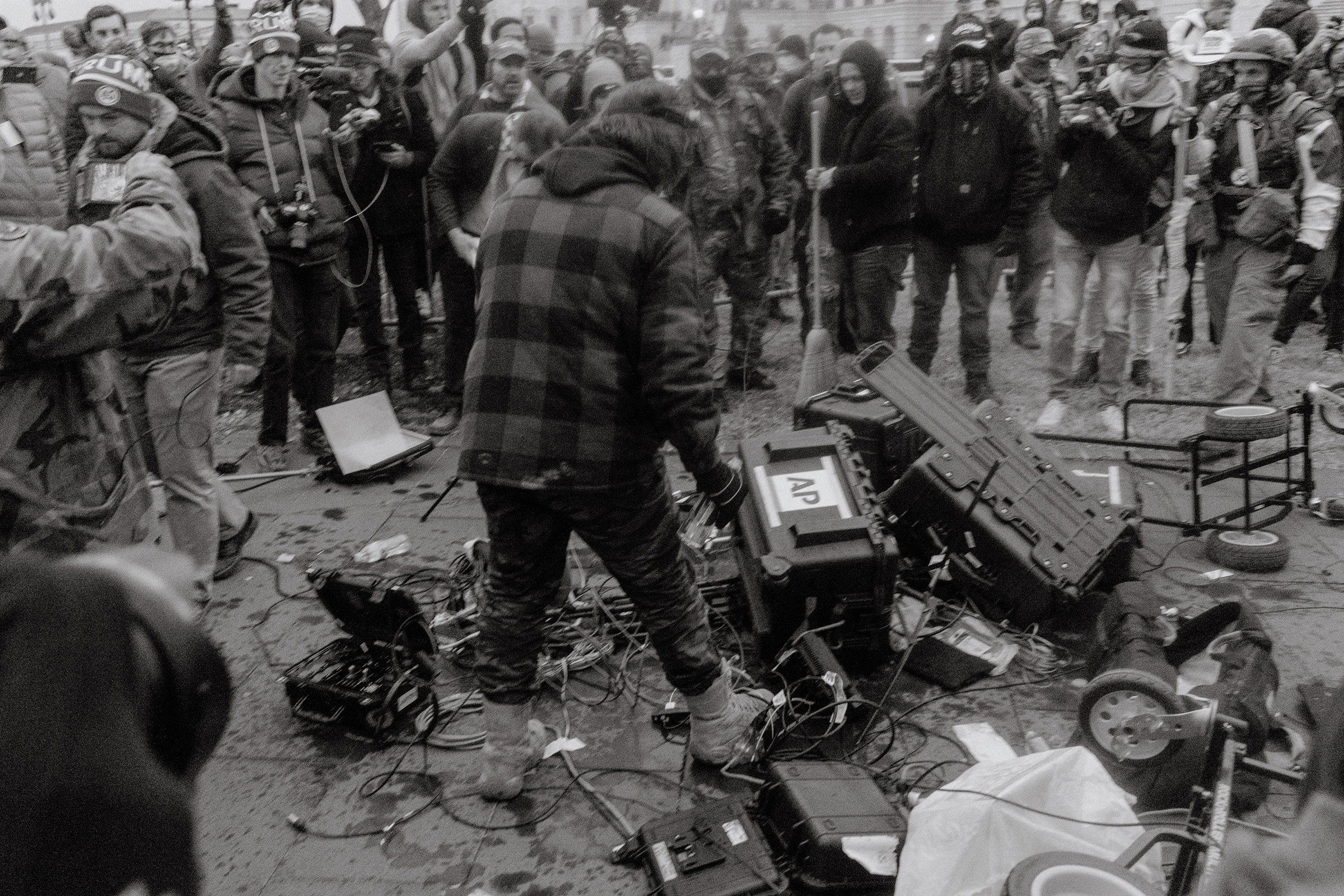
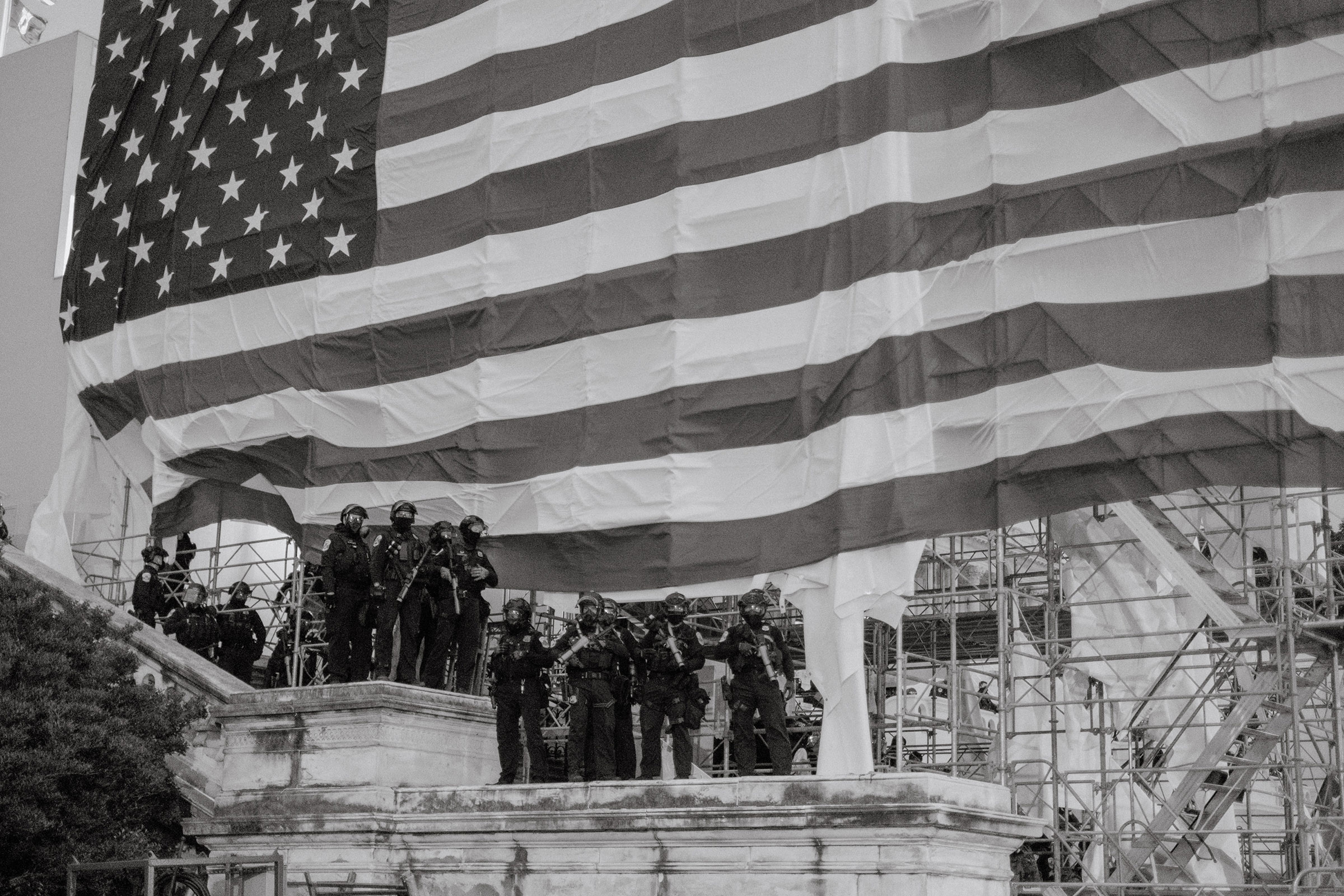
Looking at how far the rioters penetrated and the destruction they wrought, Lee couldn’t help but think about “how delicate our society is and how delicate that democracy is.”
“I’ve worked and photographed in destabilized countries and I think that a lot of America was forced to confront that reality that a lot of destabilized countries have to go through,” Lee says. “This isn’t something that happened because of a rally. This isn’t something that happened because of a couple tweets. This was a compounded event. This was something that was building up. And I think that anyone who says, ‘Oh, I never expected this to happen,’ or ‘I never thought this could happen,’ has just not been engaged or paying attention to what’s been going on.”
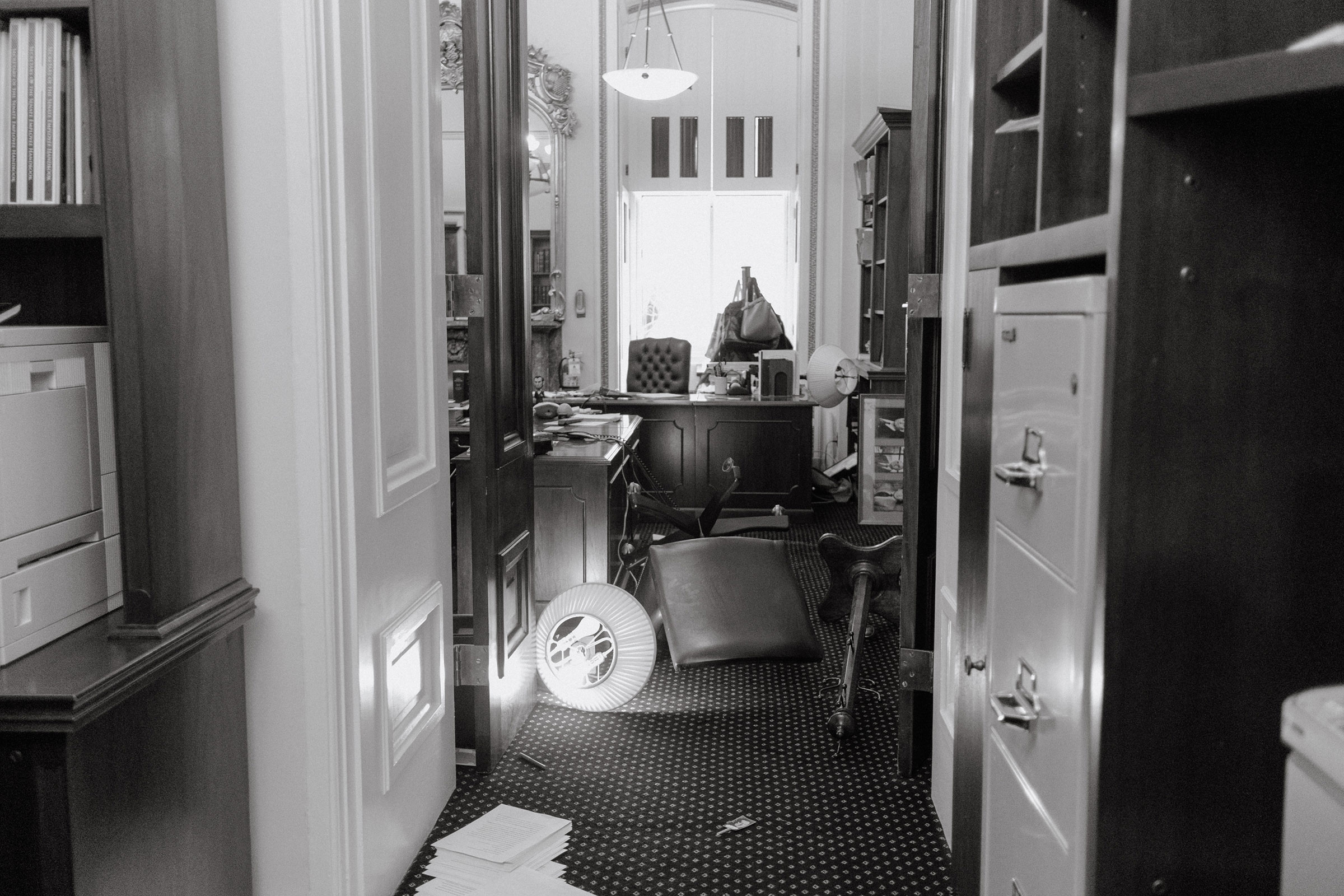
More Must-Reads From TIME
- The 100 Most Influential People of 2024
- Coco Gauff Is Playing for Herself Now
- Scenes From Pro-Palestinian Encampments Across U.S. Universities
- 6 Compliments That Land Every Time
- If You're Dating Right Now , You're Brave: Column
- The AI That Could Heal a Divided Internet
- Fallout Is a Brilliant Model for the Future of Video Game Adaptations
- Want Weekly Recs on What to Watch, Read, and More? Sign Up for Worth Your Time
Write to Abigail Abrams at abigail.abrams@time.com
